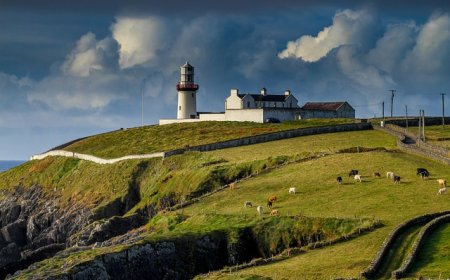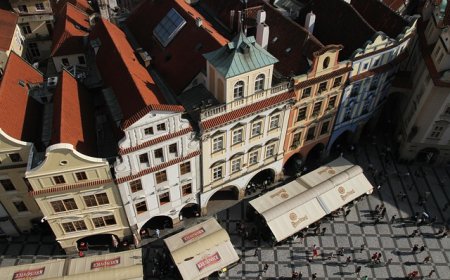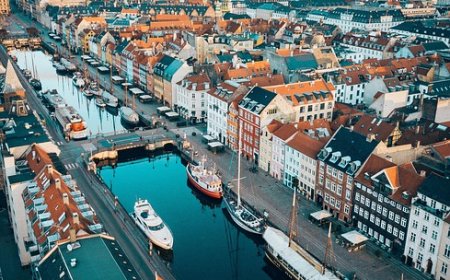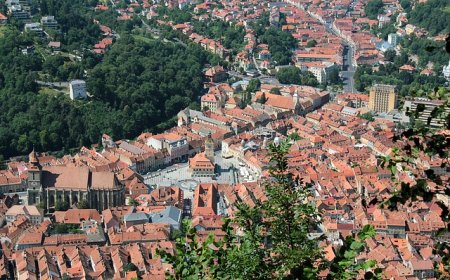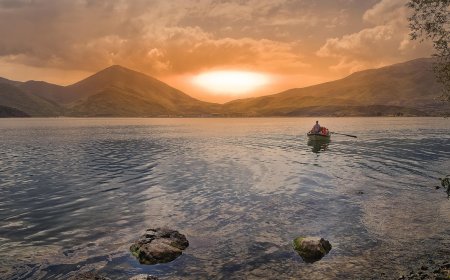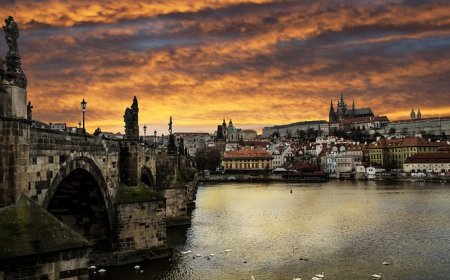Norway: Geography, History, and Culture for Students
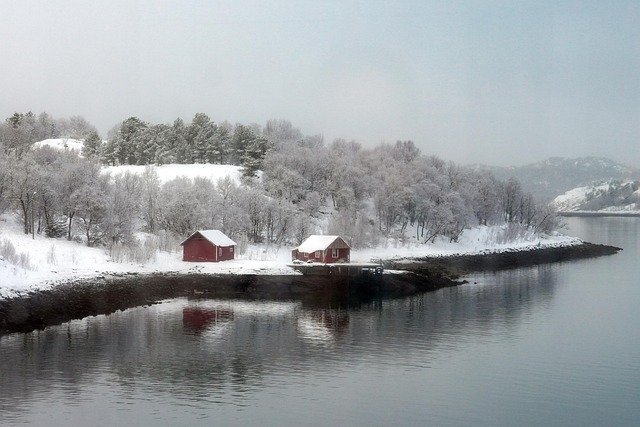
🇳🇴 Norway: The Land of Fjords, Vikings, and the Northern Lights
🗺 Introduction
Norway is a land of striking natural beauty, strong traditions, and fascinating history. Located in Northern Europe, Norway is famous for its fjords, northern lights, and Viking past. From snow-covered mountains to colorful fishing villages, it is a country that celebrates both the wild outdoors and a peaceful way of life.
In this article, you’ll explore Norway’s geography, cities, people, and history. You’ll also discover what daily life is like in one of the world’s happiest and most environmentally friendly nations.
🌍 Geography and Location
Norway is located on the western side of the Scandinavian Peninsula in Northern Europe. It shares borders with Sweden, Finland, and Russia, and its long Atlantic coastline faces the Norwegian Sea and the Barents Sea.
One of the most famous features of Norway’s geography is its fjords—long, narrow inlets of water surrounded by steep cliffs, carved by glaciers during the Ice Age. These fjords are found all along the west coast and attract visitors from around the world.
The land is mostly mountainous, with forests, lakes, and rivers covering large areas. In the far north, you can experience the midnight sun during summer (when the sun never sets) and the northern lights—a dazzling natural light show—during the long winter nights.
🏙 Cities and Regions
The capital of Norway is Oslo, a modern city surrounded by forests and located by the sea. Oslo is known for its museums, green spaces, and clean energy. It is home to the Royal Palace, Vigeland Sculpture Park, and the Nobel Peace Center, where the Nobel Peace Prize is celebrated each year.
Other important cities include Bergen, a colorful city near the fjords with a rich history in trade and fishing; Trondheim, an old Viking city in the north; and Tromsø, which lies above the Arctic Circle and is a great place to see the northern lights.
Norway is divided into counties and municipalities, each with its own traditions, local foods, and natural beauty. In the north, you’ll find the Sámi people, an Indigenous group with a unique language and culture closely connected to nature and reindeer herding.
👨👩👧👦 People, Language, and Culture
Norway has a population of about 5.5 million people. The official language is Norwegian, though Sámi languages are also recognized in certain areas. Many people also speak English, especially in cities.
Norwegians value equality, education, and outdoor life. A key part of their lifestyle is something called friluftsliv, which means “open-air living.” People spend time hiking, skiing, fishing, and enjoying nature year-round. Even in winter, families go sledding or build snowmen rather than staying indoors.
Norway is a constitutional monarchy with a royal family. The country is also a democracy, and citizens vote for their government. Religion is not a big part of everyday life for most Norwegians, but traditional Christian holidays are still celebrated, especially Christmas and Easter.
🍽 Norwegian Food and Daily Life
Norwegian food is shaped by the country’s long winters and coastal location. Fish, potatoes, bread, and dairy products are common in many meals. Norwegians also enjoy wild game, berries, and hearty stews.
Popular Norwegian foods include:
Lefse, a soft flatbread made from potatoes
Kjøttkaker, meatcakes served with gravy and potatoes
Gravlaks, cured salmon served with mustard sauce
Brunost, a sweet brown cheese with a caramel flavor
Vafler, heart-shaped waffles often topped with jam or sour cream
In daily life, Norwegians enjoy a good balance between work and rest. School and work days are often followed by time outdoors or with family. Recycling and eco-friendly living are also part of normal life. Many homes are built with wood and designed to use as little energy as possible.
🏛 History of Norway
Norway’s history stretches back thousands of years, but one of its most famous eras is the Viking Age, which began around the year 800 CE. The Vikings were Norse sailors and warriors who traveled to other lands, including England, France, and even North America. They were not only raiders but also traders, explorers, and settlers.
In the Middle Ages, Norway became a Christian kingdom and was later united with Denmark and Sweden at different times. It gained full independence in 1905 and has been a peaceful, democratic nation ever since.
Norway stayed neutral during World War I but was invaded by Germany in World War II. After the war, Norway joined the United Nations and later helped form NATO, a group of countries that protect one another.
Today, Norway is not part of the European Union, but it works closely with other European countries through trade and cooperation.
🌿 Nature and Environment
Norway is one of the most environmentally conscious countries in the world. It uses hydropower—electricity made from flowing water—for most of its energy. The government encourages electric cars, and many people use bikes or public transportation.
Wildlife in Norway includes moose, reindeer, lynx, and arctic foxes. In the sea, you can find whales, seals, puffins, and many kinds of fish. National parks protect large areas of wilderness, and people take great pride in keeping nature clean and healthy.
Thanks to its long coastline and deep waters, Norway has one of the world’s largest fishing industries and exports fish to many countries.
🧠 Why Norway Matters
Norway may not be a large country, but it has made important contributions to science, art, and environmental leadership. It is known for its peaceful politics, high quality of life, and commitment to helping people around the world. The Nobel Peace Prize, one of the highest honors for people who work for peace, is awarded each year in Oslo.
Norway also helps preserve Indigenous cultures, protects its environment, and offers free education and healthcare to its people. Whether through its Viking past or its modern achievements, Norway continues to inspire the world.
📚 Vocabulary List
Word Definition
Fjord A deep, narrow sea inlet between high cliffs, created by glaciers
Friluftsliv A Norwegian word meaning "open-air living" or enjoying nature
Viking A Norse explorer, trader, or warrior from the early Middle Ages
Sámi Indigenous people of northern Norway, Sweden, Finland, and Russia
Hydropower Electricity made by using the energy of flowing water
Monarchy A country ruled by a king or queen
Gravlaks Cured salmon, often served with mustard sauce
NATO A group of countries that agree to defend each other (North Atlantic Treaty Organization)
✨ Fun Facts About Norway
Norway has over 1,000 fjords, many of which are UNESCO World Heritage Sites.
The midnight sun shines all night in northern Norway during summer.
Tunnels and ferries are common ways to travel between towns because of the mountains and water.
The world-famous composer Edvard Grieg was Norwegian.
Norway’s royal family lives in the Royal Palace in Oslo and participates in national celebrations.
👧🧒 Kid-Friendly Summary
Norway is a country full of forests, fjords, and friendly people. It has long winters and exciting summers with the midnight sun. Norwegians love nature and spend lots of time outside. Long ago, Vikings from Norway explored faraway lands, and today, the country is peaceful, clean, and happy. You can eat heart-shaped waffles, watch the northern lights, and hike through beautiful mountains. Norway is a cool country with lots to explore!
🧠 Interactive Quiz: How Well Do You Know Norway?
1. What is the capital city of Norway?
A) Bergen
B) Oslo
C) Stockholm
D) Trondheim
2. What natural feature is Norway known for?
A) Volcanoes
B) Deserts
C) Fjords
D) Plateaus
3. What are Vikings best known for?
A) Farming
B) Exploring and sailing
C) Building pyramids
D) Making maps
4. What type of power is used in Norway to make electricity?
A) Solar power
B) Wind power
C) Oil
D) Hydropower
5. What is “friluftsliv”?
A) A type of cheese
B) A Norse god
C) Living and enjoying the outdoors
D) A Viking ship


















































